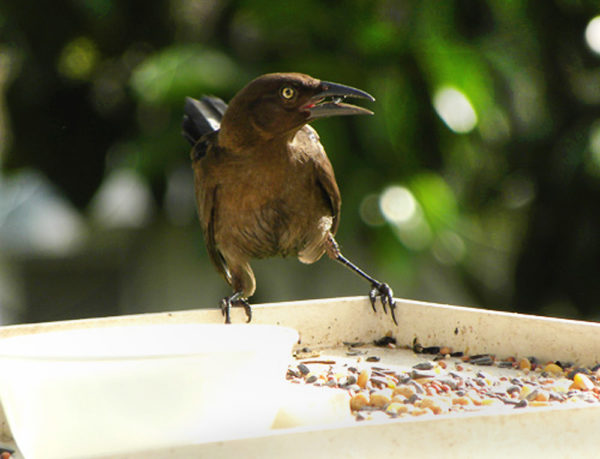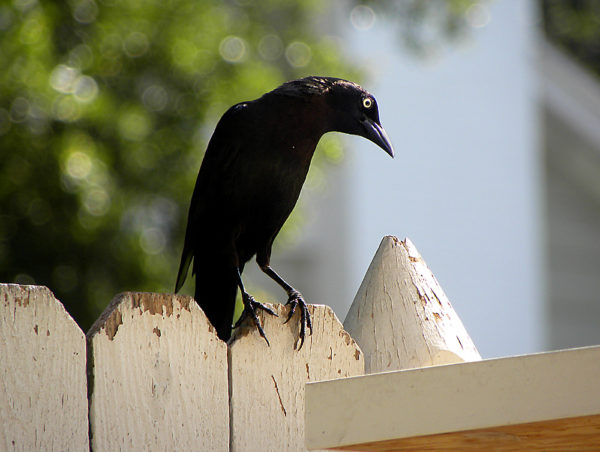Today we are featuring Heather Wolf’s photo of a Rusty Blackbird standing in the grass of Brooklyn Bridge Park. Regretfully the Rusty Blackbird’s overall “vulnerability status” is high. If one looks at the Audubon Range map you will see that about 67 percent of the species’ Northern range has been lost. The population has plunged an estimated 85-99 percent over the past forty years. Scientists are not sure why yet. I would certainly say that with the amount of blackbirds and grackles we see on the West Coast of Central Florida, those statistics were shocking.
The U.S. Fish and Wildlife has a “Rusty Blackbird Working Group” to help study the species that was basically ignored until the mid-1990s, when it became evident they were declining dramatically. Bird watchers and scientists have nicknamed these birds as “Rusties.” The Brewer’s Blackbird and Common Grackle are the most likely species to be confused with Rusties.
I took some shots of the blackbirds that visited my birdfeeder, and the difference between the solid black male and the more brownish female is apparent. Of note is the female’s aggressive-looking reaction to a visitor.

Around here in Central Florida we often see flocks of Crows and Blackbirds congregate next to each other on the overhead electric wires where they just seem to sit there for no apparent reason, and then suddenly, also for no apparent reason, they will all fly away at the same time and fill the immediate sky. We are thankful that the Hitchcock movie “The Birds” was just that, something imagined in a movie.
The Cornell Lab of Ornithology says that in the winter, male Rusty Blackbirds are recognized by their rusty feather edges, pale yellow eyes, and buffy eyebrows. Females are gray-brown; they also have rusty feather edges, pale eyes, and bold eyebrows, contrasting with darker feathers right around the eye. Breeding males are a dark, glossy black.
Rusty Blackbirds are a bit larger and longer-tailed than Red-Winged Blackbirds and with a more slender bill. Rusties are also thinner-billed and shorter-tailed than the Common Grackle.
I know from keeping an eye on my bird feeder that the blackbirds and grackles can be pretty aggressive, although Blue Jays, also aggressive and smart, are not afraid of the blackbirds.

Audubon points out that birders might jokingly say this blackbird is rusty because it spends so much time in the water. In migration and winter the Rusty Blackbird can often be seen in swampy places, wading in very shallow water at the edges of wooded streams. In summer, it retires to northern spruce bogs; no other blackbird has such a northerly breeding distribution.
The Cornell Lab of Ornithology describes the “song” of the Rusty Blackbirds as “a distinctive bubbly call, kurlulr-teEE, often ending on a high-pitched rising note.” Although the term “Rusty” is a nickname, the call of a Rusty Blackbird sounds exactly like a door on a rusty hinge.


